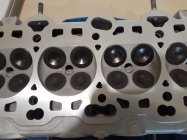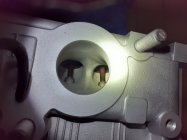Radical_Ralliart
Member
Haven’t found a thread talking about cylinder heads so thought i’d start one. (This would be about keeping the engine N/A)
I’m considering buying either a whole 4g69 engine or just the cylinder head at some point. Im wondering if theres decent power to be gained from just upgrading the head.
Is it worth upgrading the camshaft with stock bottom end? (Thought about stage 1 n/a rpw cam but i’d like some input on tuning specs between different stage cams)
Is there good benefits from port and polishing?
at what point would upgrading the valve springs be necessary?
would be beneficial to get the head surfaced decked, and is it safe to lap the valve seats using a grinding compound? (Permatex compound for example)
I’d like to get as much info and insight into these engines as i can. i’ve never torn apart an engine or modified one, but i really want to try my hand at it.
I’m considering buying either a whole 4g69 engine or just the cylinder head at some point. Im wondering if theres decent power to be gained from just upgrading the head.
Is it worth upgrading the camshaft with stock bottom end? (Thought about stage 1 n/a rpw cam but i’d like some input on tuning specs between different stage cams)
Is there good benefits from port and polishing?
at what point would upgrading the valve springs be necessary?
would be beneficial to get the head surfaced decked, and is it safe to lap the valve seats using a grinding compound? (Permatex compound for example)
I’d like to get as much info and insight into these engines as i can. i’ve never torn apart an engine or modified one, but i really want to try my hand at it.




